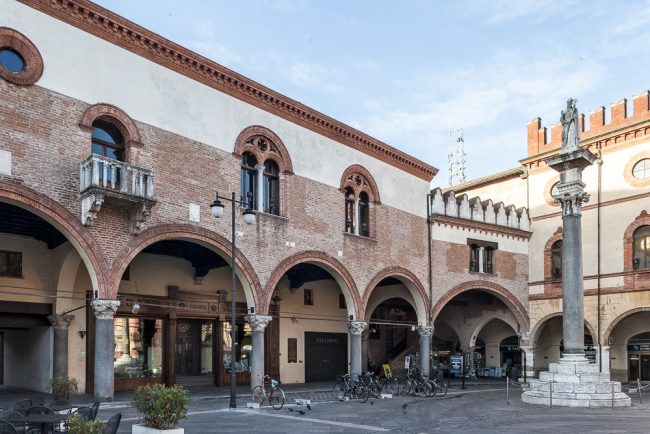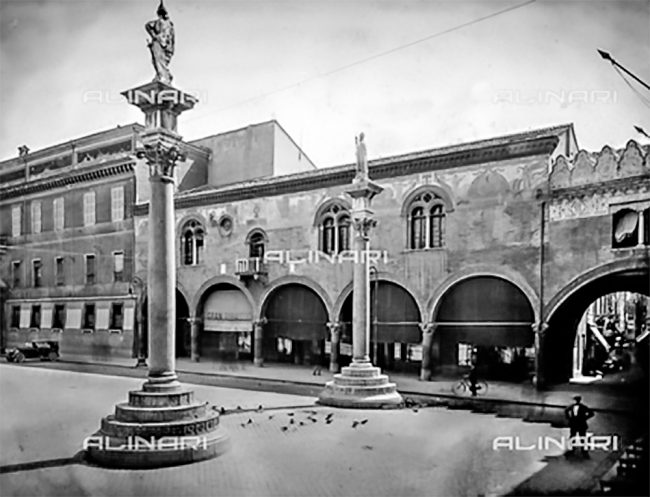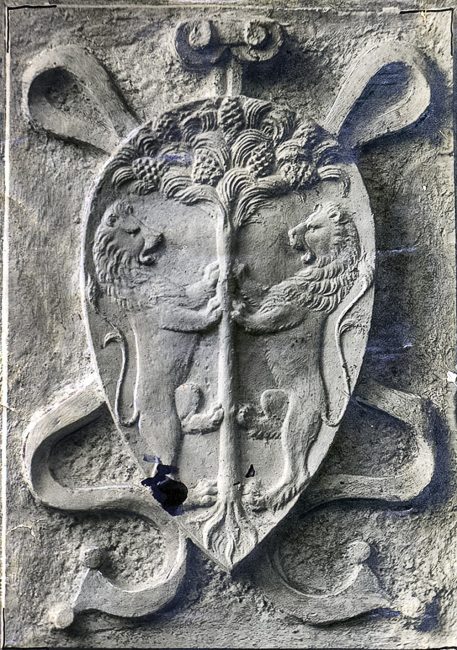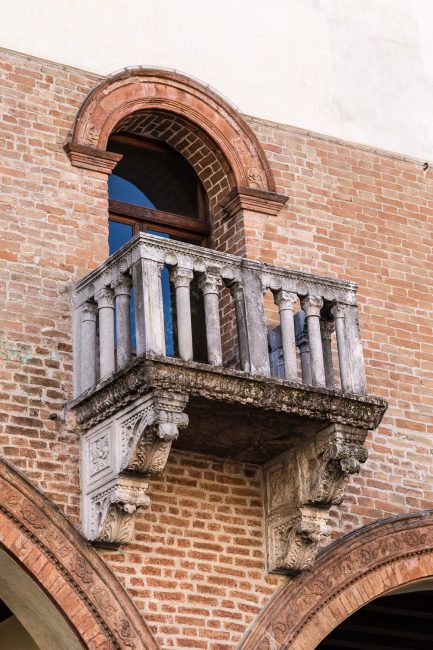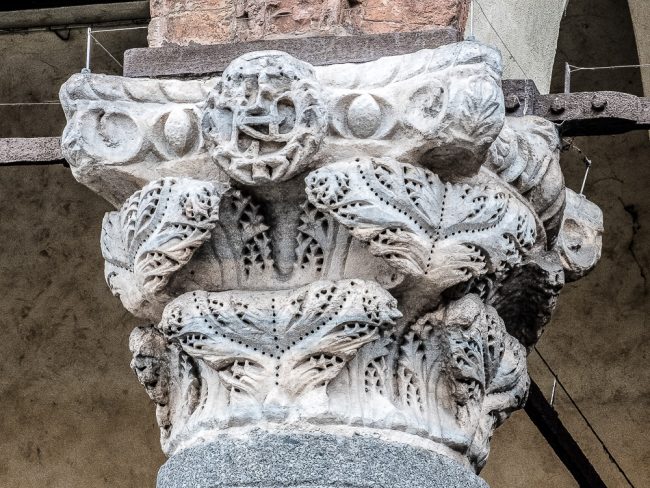Palazzetto Veneziano o Palazzo del Podestà
1461-1463
Fruit of a long series of reconstructions and works started off by the Venetians during their domination from 1441 al 1509, the building, seat of government until the construction the Town Hall, rises on the area where there used to be the Mayor’s palace since the 14th century. The gallery of the ‘Palazzetto Veneziano’, also called ‘palazzo Nuovo’, has five wide arches with terracotta archivolt, the structure of which is sustained by six columns with six capitals whereas the other two columns are built-in the wall. Four capitals have the sculptured monogram of the Goth King Theodoric the Great (454 ca.-526), which leads us to think that they come from the Theodorican Church of St. Andrea dei Goti, and re-used here around 1461 when the church was demolished to allow the construction of the Rocca Brancaleone.
The Palazzetto Veneziano is connected on the right side to the Town Hall by means of a big vault of the 16th century that opens onto the ancient via Palserrato, now called Cairoli,
Whereas the left side borders the ancient Apostolic Palace, now the Prefecture Palace, that was widened during the 16th century including an internal arch and a column of the Palazzetto. The mullioned windows and round openings on the façade were re-opened in 1921 on the basis of traces that were found during the restorations of 1896 instead of non-original rectangular openings. Originally the building was probably frescoed externally with geometrical patterns. We must point out the refined balcony with a balustrade made of little columns and low relief carved corbels that includes the bearings of Vitale Lando, mayor in 1461-1462.
Click here to see the buildings in the surrounding area on the map

